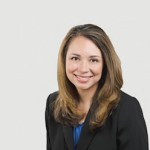When you look at a floor plan for a convention center for the first time, what do you see? A series of dotted lines, rectangles, and squares that represent meeting rooms and exhibit halls, right?
As planners, our natural inclination is to try to put things inside those lines and shapes so that we have nice, neat little packages. Sometimes filling the boxes is easy; using the space provided presents few challenges. But that’s not always the case. Often, we’re forced to tailor our programs or events to fit within the walls and dimensions we have to work with — and we end up putting the wrong things in the wrong space.
I’m struggling with this exact challenge right now as we plan for PCMA’s Convening Leaders annual meeting, Jan. 13–16, 2013. I just returned from a productive site visit in Orlando, where my team and I brainstormed about the space at the Orange County Convention Center (OCCC) West Building — our home for Convening Leaders 2013.
Rather than figuring out how to compartmentalize our meeting into the center’s allotted spaces, we’re taking the opposite approach. We keep asking ourselves: What are we trying to accomplish with our meeting experience? How can we make the space work toward that end — and not the other way around? Those are the questions that guide our meeting design. When you layer on top of that PCMA’s commitment to showcase innovative processes and meeting elements, it becomes an even more challenging puzzle.
I asked our team to experiment with the space for all aspects of the meeting: general sessions, luncheons, PCMA Learning Lounge, and networking areas. Even though the exhibit halls are a series of long rectangles separated by dotted lines on paper, we asked ourselves: What if we pretend those dotted lines don’t exist, and think of the space as a blank canvas? Instead of using each hall for a separate event, what would happen if we combined the entire space and built an experience without walls?
We also considered how we might use space that currently exists for a specific reason – a food court, for example — for something entirely different. At Convening Leaders, we don’t need cash food concession stands, but that space at the OCCC West Building is in a great location with plenty of tables and chairs — ideal for conversations and checking email. With networking a critical component of Convening Leaders, this area could help facilitate some great interaction.
We’re working with a fantastic facility whose smart and professional staff members were very patient as we walked the space over and over again and bounced off each other’s ideas. We don’t have all the answers at this point, but we will continue to be guided by the goal of enhancing our participants’ experience with learning opportunities in every aspect of our meeting.
Made to Fit
I’m excited about where this creative discovery of space use is going to take Convening Leaders 2013, and I promise to share the journey with you. Tell me about your biggest space challenges and how you overcame them. Email me at kpeacy@pcma.org.
